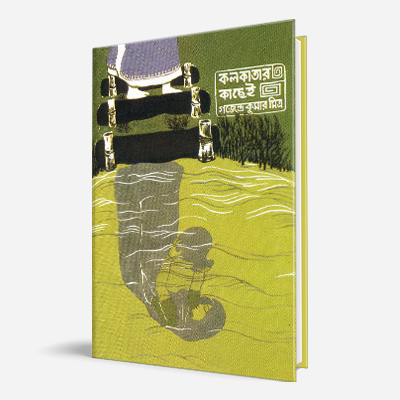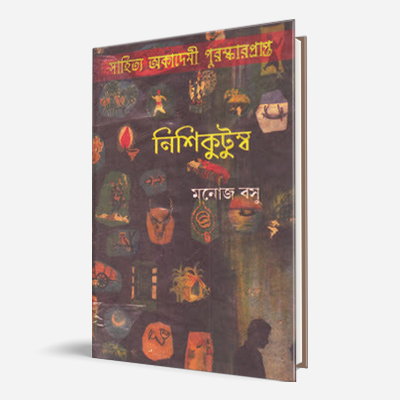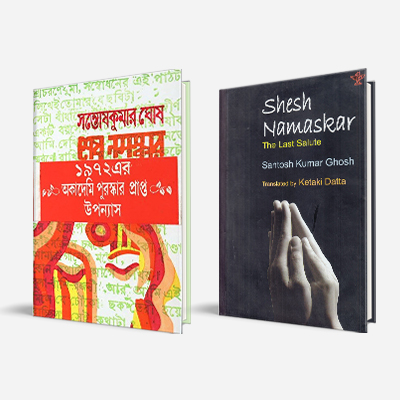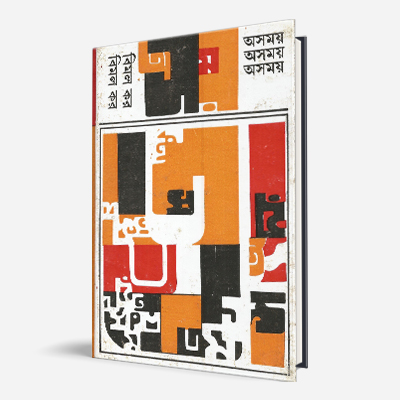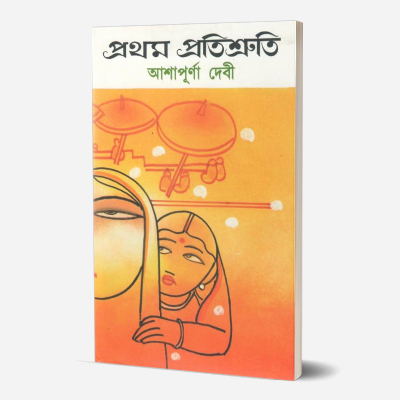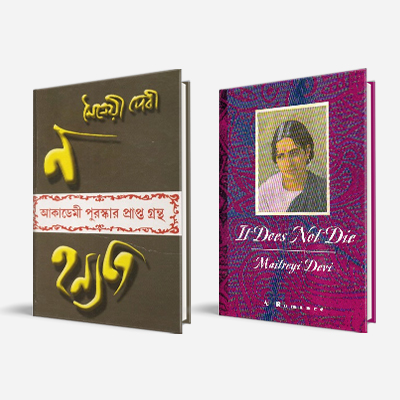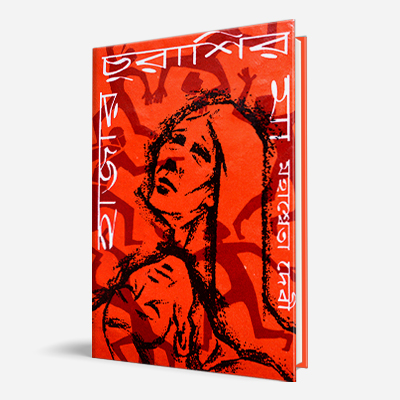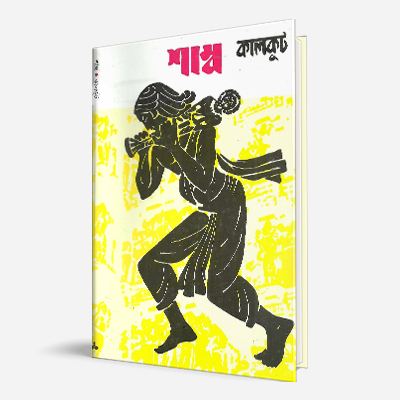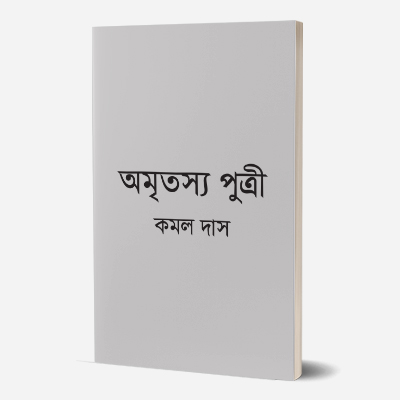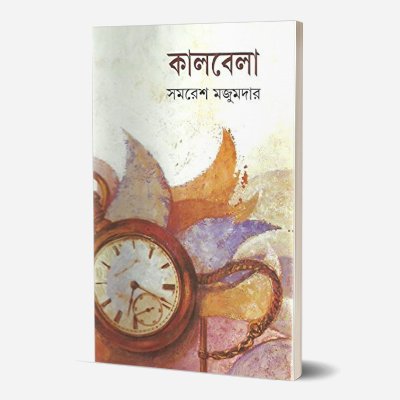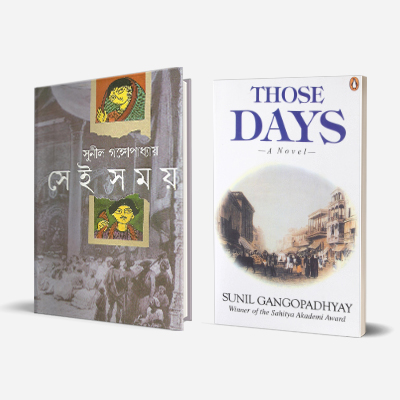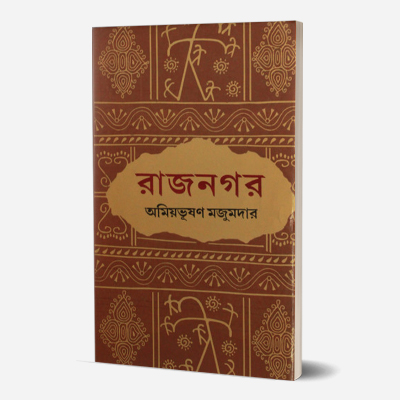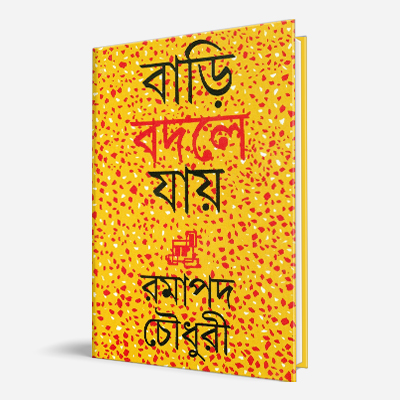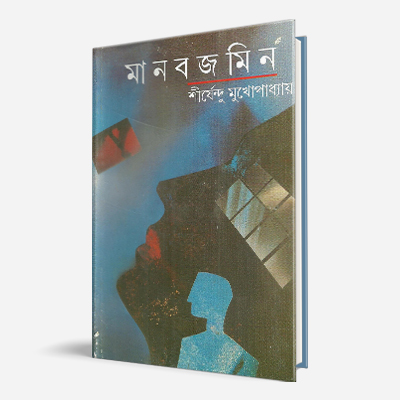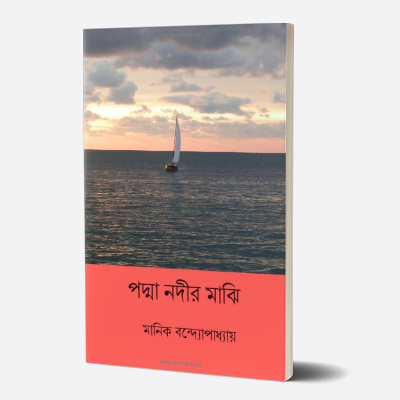Amritasya Putree
By Kamal Das
AWARD: Sahitya Akademi (1982)
Amritasya Putree was Kamal Das’s first novel. It has been translated into Odia and English as ‘Daughter of Immortality’. Enriched with the experiences of rural districts where her father was a judge and subsequent life in New Delhi, where her husband Debesh Das, a fellow writer and a member of the Indian Civil Service, was posted—the book follows the life of Amrita, the protagonist who has come to this world without any reference, i.e., of no origin that can be traced. The book later became the name of an endowment by the Ramakrishna Mission Institute of Culture, the royalties from the novel being used to support female Indian scholars and lecturers. Amritasya Putree received the Sahitya Akademi Award in 1982.
About the Author
Kamal Das has produced six novels including Twamasi Momo (1983) and Amritam Bibhati (1984) and three intellectual travelogues—Jana Ajana (1977), Uttare Meru Dakshine Ban (1980) and Cake, Chocolate Aar Rupkatha (1981). Her extensive travels have given her a deep insight and understanding. Thus, much more than travelogues, these are a demonstration—through anecdotes and descriptions—of experiences, of deep feelings conveyed with rare wit and grace.
Kalbela
By Samaresh Majumdar
AWARD: Sahitya Akademi (1984)
Kalbela is part of the Animesh quartet. The principal character of the series is Animesh Mitra who, much like the author himself, grows up amid the tea estates of the Dooars in northern Bengal, but then moves to Kolkata in the 1960s in order to study at Scottish Church College. Animesh then plunges into the Naxalite rebellion that rocked West Bengal in the late 1960s and 1970s. Through the character of the protagonist, Majumdar portrays the tumultuous political history of West Bengal in the post-independence era. Kalbela was serialized in the prestigious literary magazine Desh in 1981-1982 and adapted into a film by the director Goutam Ghose in 2009. According to the academic Amaresh Datta, “the strength of the work can be seen in its configuration of relationships on various levels and a search for meaning through them… [It] is a novel of love and realization—love of life and the realization that this life is perennially explorable.”
About the Author
Samaresh Majumdar is a versatile writer though many of his novels have a touch of thrill and suspense attached to them which is noticeable in his novels like Aath Kuthuri Noy Daraja, Bandinibash, Daybadhha, Buno Haansher Palak. His first novel Dour was published in 1976. Being a prolific writer who has excelled in different genres, Samaresh Majumdar has worked upon short stories, novels, travelogues, and children’s fiction. He has written more than sixty novels and over one hundred fifty short stories. Some of his remarkable novels include Saatkahon, Tero Parbon, Ujan Ganga, Swapner Bazaar and Kolikatay Nobokumar. His quartet of Uttoradhikar, Sahitya Akademi Award-winning Kalbela, Kalpurush and Moushalkal are now considered modern classics, and many of his novels have been adapted into major Bengali movies as well. From the tea gardens of the Dooars to the core of the concrete jungle of the city life, his characters and stories have diverse shades and depth and have won a special place in the hearts of the readers.
Also read
Kalpurush
Originally published in 1985, Samaresh Majumder’s Kalpurush is the last of the famous Animesh trilogy, which is widely regarded as Samaresh Majumdar’s finest work, as well as one of the most significant works of modern Bengali literature. The sequel to the Sahitya Akademi Award-winning Kalbela, this riveting novel explores the conflict of Arko, the son of Animesh and Madhabilata, who tries to strike a balance between the idealism of his parents and the harrowing forces of consumerism which subsume his life.
Arjun Series
Arjun is a fictional young adventurer-detective hero, created by Samaresh Majumder, who hails from Jalpaiguri of West Bengal. Arjun’s mentor is retired official cop Mr. Amal Shome, who makes him understand his true calling. Although Arjun himself solves the cases but mostly works as the assistant of Shome. As the series evolves, Arjun matures, unlike adult detectives who are already evolved. Samaresh Majumdar, who uses the enchanting north Bengal terrain as a backdrop in his novels, bases the young detective Arjun in the same region. It gives his detective fiction a kind of charm that is missing in most city-centric writing. Kalimpong e Sitaharan was the first Bengali film based on Arjun. Books from the Arjun series include Khutimari Range, Khunkharapi, Arjun@beep beep dotcom, Khiljir Guhay Arjun and many more.
Another Outsider
(translated into English by Manojit Mitra and published by Bee Books)
The protagonist Shahin is one of those many boys from rural Bangladesh who make up for the thousands of illegal immigrants of the US. He travels to the US with a theatre company to perform for Bengali associations in several cities. Finally, instead of returning with his team, he stays back, literally dissolving in the multitude of those who seek their fortune in the US while all the time running from the police. Like most such boys, Shahin joins a restaurant that employs illegal migrants because they come cheap. His only aim is to save enough money so that he can send money back home to his aged parents, who dream of repairing their doddering house. Playing hide and seek with the police, Shahin soon finds himself working for a transport company but again gets too close to the police. Finally, luck favours him and Shahin gets a green card that enables him to visit home. But things are not the same anymore. He is now just another outsider.
Sei Samay
By Sunil Gangopadhyay
Translated into English as Those Days by Aruna Chakravarti (Penguin, 1997)
The nineteenth-century Bengal Renaissance and the 1857 uprising form the backdrop to Sei Samay (1982), a saga of human frailties and strength which also explores the cross-cultural currents of social, political and intellectual life in the city of Calcutta. Sei Samay (translated into English as Those Days by Aruna Chakravarti) is a period novel which revolves around the creator of Hutum Pyanchar Naksha, Kali Prasanna Singha, along with other legendary historical figures including Ishwar Chandra Vidyasagar, the reformer; Michael Madhusudan Dutt, the poet; the father and son duo of Dwarkanath Tagore and Debendranath Tagore; Harish Mukherjee, the journalist; Keshab Chandra Sen, the Brahmo Samaj radical; David Hare and John Bethune, the English educationists, and others who bring alive a momentous time. The novel, appearing in serial form in Desh over a period of two and a half years and published in two volumes in 1981 and 1982, deftly weaves the actual and purely fictional into the vast canvas of its story using a rational, analytical and unbiased voice. Notably, for this novel, the stress on the characters goes into highlighting the era being written about, rather than the opposite. Yet Sunil stresses in his epilogue that “Sei Samay is a novel—not a historical document…The fiction writer, even when depicting historical truth, has to invest it with the light of the imagination.” According to academic Jagannath Chakravorty, “[Sei Samay] brings within its fold history and hearsay, fact and fancy, document and comment almost with equal ease…[It is] one of the most significant contributions to Bengali fiction in recent years”. It received the Sahitya Akademi Award in 1985.
About the Author
The author of well over 200 books, Sunil Gangopadhyay (1934-2012) was a prolific writer who authored numerous novels, travelogues and collections of poetry during his lifetime, but declared poetry to be his “first love”. His better-known poetry collections are Eka ebang Kayekjon (1958), Amar Swapna (1972), Bandi Jege Achhi (1974), and Ami ki Rakam Bhabe Benche Achhi (1975). Gangopadhyay was the founder editor of Krittibas, an epoch-making poetry magazine started publishing from 1953, that became a platform for a new generation of poets experimenting with many new forms in poetic themes, rhythms, and words. Storming into the field of the novel with the trendsetting Atma Prakash (1966)—a powerful portrayal of the frustration and ennui of the youth of Calcutta—he soon rose to become one of the most popular Bengali novelists. Gangopadhyay also created the popular fictional character Kakababu and wrote a series of novels on this character, which became significant in Indian children’s literature. Gangopadhyay wrote under the pen names: Nil Lohit, Sanatan Pathak, and Nil Upadhyay.
Also read
Prothom Alo (First Light)
The sequel to the award-winning and critically acclaimed Those Days, Prothom Alo (translated into English as First Light) was first published in 2001.It is a magnificent novel set at the turn of the twentieth century in a Bengal where the old and young India are jostling for space. Prominent among its many characters are Rabindranath Tagore or Robi, the young, dreamy poet, torn between his art and the love for his beautiful, ethereal sister-in-law, Kadambari Devi, and the handsome, dynamic Naren Datta, later to become Swami Vivekananda. Grand in its scale and crackling with the energy of its prose, Prothom Alo is a rich and comprehensive portrait of Bengal, from its sleepy, slow-changing villages to the bustling city of Calcutta where the genteel and the grotesque live together. Equally, it is a chronicle of a whole nation waking up to a new, modern sensibility.
Pratidwandi (The Adversary)
Originally published in 1974, Sunil Gangopadhyay’s novel Pratidwandi has also been translated into English by Enakshi Chatterjee as The Adversary. Set in the late 1960s, Pratidwandi perfectly captures the cynicism, despair, economic corruption and social upheaval which had engulfed the urban youth of Calcutta and was instrumental in their affiliation with the communist ideology. Siddhartha, the protagonist of this politically turbulent novel, is also emblematic of the interminable ennui of his peers and their travails and resistance while trying to survive in a brutally materialistic society. His family, having lost their tea estate, fell in dire financial straits and thus began a cycle of misfortunes which only exacerbated Siddhartha’s growing sense of futility and bitterness as he battled on tirelessly in the face of every rejection and insecurity. The austere bleakness of the narrative, delving into the complete breakdown of the very fabric of the society, is relieved by a streak of romanticism, ethics and an idealistic vision of a world, which once embodied by Siddhartha, stands out as the redeeming feature of this novel. Satyajit Ray adapted the novel into a 1970 film, which was the first film of Ray’s famous ‘Calcutta Trilogy’ and also won three National Film Awards. According to Ashapurna Devi, an admirer of Sunil Gangopadhyay, ‘The sensibility of a real artist can turn the common into uncommon, the ordinary into extraordinary. Sunil has the power to light up those areas. The light is clear but not dazzling.’
Nishango Samrat (The Lonely Monarch)
First published in 2005, Nishanga Samrat (translated into English as The Lonely Monarch) revolves around the story of India’s greatest professional stage actor Sisir Bhaduri, a brilliant performer who was loved and respected by his peers, adored by spectators and acknowledged as a master by Rabindranath Tagore himself. Yet, Sisirkumar remained passionately committed to a singular dream: to steer his audience away from the raucous melodrama that had come to be called entertainment toward an evolved enjoyment of stage performance. Set in the vibrant world of Bengali theatre in 1924’s Calcutta, this searing novel brings to life Sisirkumar’s relentless efforts to free the stage of Western influences and mediocrity; his frustration and disillusionment with apathetic patrons and obdurate audiences; his ruinous weakness for alcohol; and the impossible ideals that alienated him from his closest friends and the women in his life. Sunil Gangopadhyay, with his inimitable literary craftsmanship, documents the tumultuous life of a remarkable man and a defining era in the history of Indian theatre, profoundly paying his tribute to the might and resilience of the creative spirit.

